This is a preprint.
The neurons that drive infradian sleep-wake and mania-like behavioral rhythms
- PMID: 38014299
- PMCID: PMC10680706
- DOI: 10.1101/2023.11.14.566955
The neurons that drive infradian sleep-wake and mania-like behavioral rhythms
Update in
-
Mesolimbic dopamine neurons drive infradian rhythms in sleep-wake and heightened activity state.Sci Adv. 2025 Jan 3;11(1):eado9965. doi: 10.1126/sciadv.ado9965. Epub 2025 Jan 1. Sci Adv. 2025. PMID: 39742489 Free PMC article.
Abstract
Infradian mood and sleep-wake rhythms with periods of 48 hr and beyond have been observed in bipolar disorder (BD) subjects that even persist in time isolation, indicating an endogenous origin. Here we show that mice exposed to methamphetamine (Meth) in drinking water develop infradian locomotor rhythms with periods of 48 hr and beyond which extend to sleep length and mania-like behaviors in support of a model for cycling in BD. This cycling capacity is abrogated upon genetic disruption of DA production in DA neurons of the ventral tegmental area (VTA) or ablation of nucleus accumbens (NAc) projecting, dopamine (DA) neurons. Chemogenetic activation of NAc-projecting DA neurons leads to locomotor period lengthening in clock deficient mice, while cytosolic calcium in DA processes of the NAc was found fluctuating synchronously with locomotor behavior. Together, our findings argue that BD cycling relies on infradian rhythm generation that depends on NAc-projecting DA neurons.
Keywords: bipolar disorders; circadian rhythms; dopamine; infradian rhythms; methamphetamine; nucleus accumbens; psychopathology; rapid cycling; tyrosine hydroxylase; ventral tegmental area.
Conflict of interest statement
Declaration of interests The authors declare no competing interests.
Figures
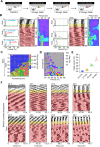
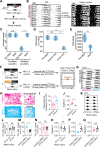


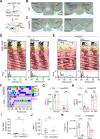
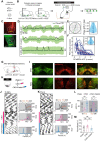
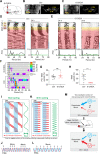
References
-
- Wehr T.A., Goodwin F.K., Wirz-Justice A., Breitmaier J., and Craig C. (1982). 48-hour sleep-wake cycles in manic-depressive illness: naturalistic observations and sleep deprivation experiments. Archives of general psychiatry 39, 559–565. - PubMed
-
- Richter C.P. (1938). TWO DAY CYCLES OF ALTERNATING GOOD AND BAD BEHAVIOR IN PSYCHOTIC PATIENTS. Archives of Neurology And Psychiatry 39, 587. 10.1001/archneurpsyc.1938.02270030165012. - DOI
Publication types
Grants and funding
LinkOut - more resources
Full Text Sources
Research Materials
